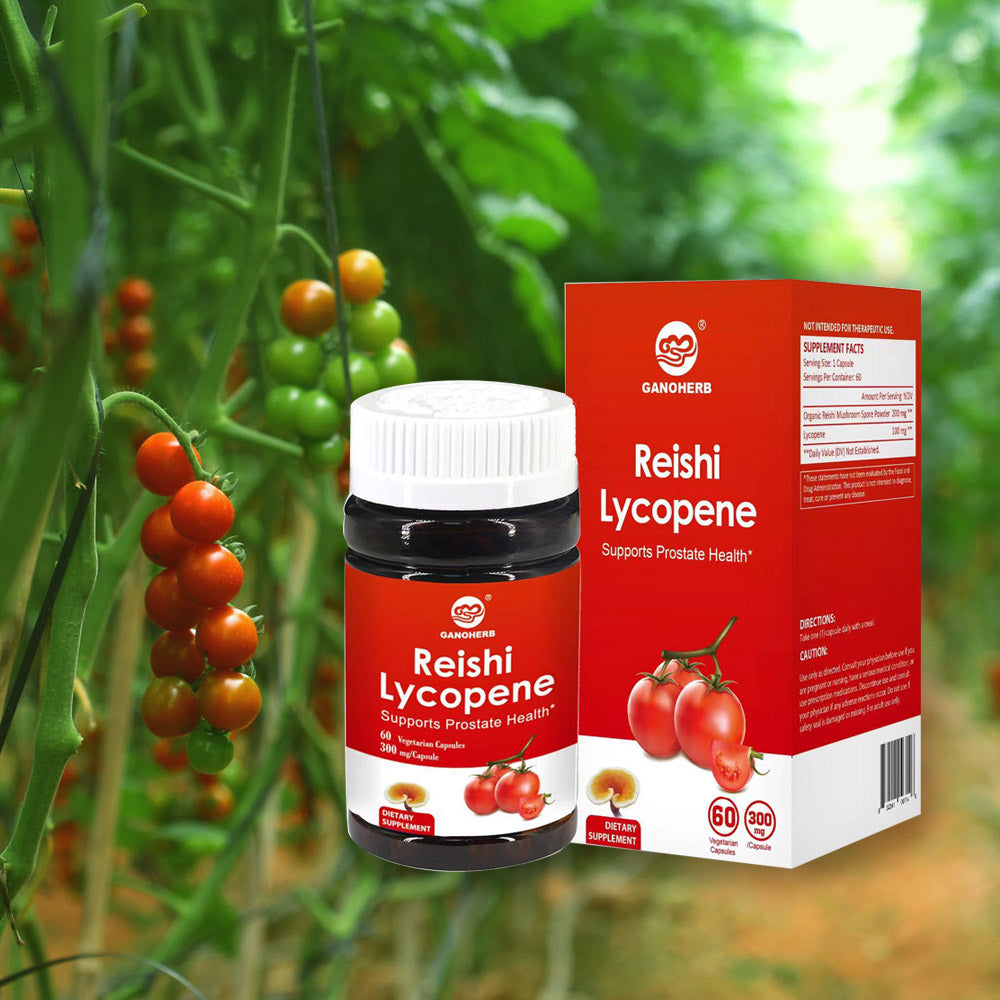Reishi Spore: Unveiling the Mysteries of Ganoderma Lucidum's Microscopic Origin
The enigmatic Ganoderma lucidum fungus, commonly known as Reishi or Lingzhi, captivates not only through its distinctive, varnished appearance but also through the microscopic marvel that ensures its survival: the Reishi spore. Far more than just dust, these spores represent the fundamental reproductive units and the starting point of the Reishi life cycle. Understanding the Reishi spore requires delving into its biology, structure, dispersal, and the intricate processes governing its existence, distinct from the mature fruiting body often celebrated in art and culture.

1. The Biological Essence: What Exactly is a Reishi Spore?
At its core, a Reishi spore is a specialized cell designed for a single, critical purpose: dispersal and propagation. Functioning similarly to seeds in the plant kingdom, though biologically distinct as fungal propagules, Reishi spores carry the genetic blueprint necessary to initiate a new Ganoderma lucidum organism under suitable conditions. They are haploid cells, meaning they contain only one set of chromosomes. When a compatible Reishi spore germinates and meets another compatible haploid hypha (fungal filament), they can fuse, combining genetic material to form the diploid mycelium network that eventually gives rise to the recognizable conk or fruiting body. The production of vast quantities of Reishi spores is nature's strategy for overcoming the immense odds against any single spore landing in an ideal environment (a specific decaying log or tree stump) and successfully establishing a new colony. The sheer number of Reishi spores released – often billions from a single mature fruiting body – is a testament to this reproductive imperative.
2. A Fortress of Chitin: The Unique Structure of the Reishi Spore Wall
One of the most defining and remarkable features of the Reishi spore is its exceptionally robust and complex cell wall. Unlike many other fungal spores, the Reishi spore possesses a double-walled structure that provides formidable protection. The primary function of this intricate armor is survival. The outer wall (exospore) is often ornamented and incredibly resilient, shielding the delicate genetic material and cellular machinery inside from harsh environmental assaults: desiccation (drying out), ultraviolet radiation from sunlight, microbial predators, and drastic temperature fluctuations. Beneath this lies the inner wall (endospore), offering another layer of defense. This Reishi spore wall is primarily composed of chitin, the same tough, nitrogen-containing polysaccharide that forms the exoskeletons of insects and crustaceans, combined with glucans and unique melanins. This chitinous fortress is notoriously difficult to breach, a characteristic that has significant implications for both the spore's natural dormancy and for human methods of accessing its contents. The thickness and composition of this wall are key identifiers for mycologists studying Ganoderma species.
3. The Art of Escape: How Reishi Spores Achieve Dispersal
Reishi fungi are typically found growing on hardwood trees or stumps. For the Reishi spore to fulfill its reproductive destiny, it must escape the confines of the protective fruiting body and travel through the air to find a new suitable habitat. Ganoderma lucidum achieves this through a fascinating mechanism. Mature Reishi spores are produced within microscopic, tube-like structures called basidia, located on the underside of the fruiting body within tiny pores (hence Ganoderma is a polypore). When the Reishi spores are mature and environmental conditions (particularly humidity) are right, a process involving the buildup of osmotic pressure culminates in the spores being forcibly ejected, or ballistosporically discharged, from their basidia. This violent ejection propels the Reishi spore initially away from the fruiting body. Once airborne, these minute particles, measuring only 5-12 micrometers in length (significantly smaller than a human hair's width), are then entirely at the mercy of air currents. Wind becomes the primary dispersal vector, carrying Reishi spores potentially over vast distances. Their tiny size and lightweight nature allow them to remain suspended in the air for extended periods, maximizing the chance of encountering a suitable new substrate, often far from the parent fungus. This efficient, wind-driven dispersal is crucial for the species' survival in forest ecosystems.

4. Germination: The Awakening of the Reishi Spore
Dispersal is only the first hurdle. For a Reishi spore to initiate new life, it must land on a suitable substrate – typically the dead or dying wood of specific hardwood trees – and encounter favorable environmental triggers. These triggers include adequate moisture, the right temperature range (usually warm, but species-dependent), and often specific chemical signals from the substrate itself. If conditions align, the dormant Reishi spore absorbs water, swells, and metabolic activity resumes. The formidable spore wall must be breached from within. The germinating Reishi spore develops a germ tube, a small hyphal projection that enzymatically weakens and penetrates the inner spore wall. This germ tube emerges, seeking nutrients and space. If another compatible germ tube or hypha (from a different, compatible mating type Reishi spore) is encountered nearby, plasmogamy (cytoplasmic fusion) can occur, followed eventually by karyogamy (nuclear fusion), establishing the dikaryotic or diploid mycelial phase. This mycelium then colonizes the wood substrate, decomposing lignin and cellulose over months or years, before environmental cues prompt it to form a new fruiting body, completing the cycle and producing a new generation of Reishi spores. The germination rate of Reishi spores in nature is inherently very low, reflecting the challenges of finding the perfect niche.
5. Harvesting and Observation: Human Interaction with Reishi Spores
The minute size and robust walls of Reishi spores present unique challenges and opportunities for scientific study and collection. Visually, a mature Reishi fruiting body actively releasing spores often appears coated in a fine, rust-brown powder – this is a dense accumulation of the ejected Reishi spores. Collecting these spores traditionally involved placing the mature fruiting body, pore-side down, over a clean surface like paper or glass, allowing the naturally discharged spores to fall and accumulate over hours or days. This yields the characteristic Reishi spore powder. Modern microscopy, particularly Scanning Electron Microscopy (SEM), has revolutionized our understanding of Reishi spore morphology. SEM images reveal intricate details invisible to light microscopes: the specific shape (typically truncate or almond-shaped), the unique patterns of ornamentation on the exospore (like pits, ridges, or spines), and the subtle differences that can help distinguish between Ganoderma species. The extreme toughness of the Reishi spore wall necessitates specialized techniques, such as mechanical grinding or enzymatic treatments, for researchers seeking to analyze the internal cellular components or extract compounds contained within the spore for biochemical studies.
6. Beyond the Basics: Scientific Intrigue Surrounding Reishi Spores
The unique properties of the Reishi spore continue to drive scientific curiosity. Research delves into the precise biochemistry of the spore wall, particularly the complex melamin-chitin-glucan matrix, exploring its formation and exceptional resilience. Understanding the genetic regulation of sporulation (spore production) and germination in Ganoderma lucidum is another active area, offering insights into fungal developmental biology. The aerodynamics of such tiny particles and their role in atmospheric microbiology (as part of the vast spectrum of airborne fungal spores) is also relevant. Furthermore, the challenge of efficiently breaking the Reishi spore wall (sporoderm-broken techniques) without damaging the internal contents is a significant focus within mycology and related analytical fields, driven by the desire to study the spore's full composition. The sheer abundance of Reishi spores released into ecosystems also prompts questions about their ecological role beyond propagation, such as potential interactions with soil microbiota or other forest organisms.
7. Distinguishing Spore from Fruiting Body: A Critical Clarification
It is paramount to distinguish the Reishi spore from the mature Reishi fruiting body (conk). They are fundamentally different stages in the organism's life cycle with distinct biological roles and compositions. The fruiting body is the large, visible, woody structure formed by the mature mycelium specifically for spore production and dispersal. It is a complex multicellular structure. In contrast, the Reishi spore is a single, microscopic reproductive cell produced by that fruiting body. While both originate from Ganoderma lucidum, their physical forms, sizes, biochemical profiles (due to the spore's unique wall and internal reserves), and their functions within the fungal life cycle are vastly different. Referring to Reishi spore powder specifies the collected mass of these microscopic cells, setting it apart completely from powders derived from grinding the whole fruiting body. Understanding this distinction is crucial for accurate scientific discussion and identification.
The Reishi spore, though vanishingly small, is an entity of profound biological significance. Its intricate armored structure ensures survival against formidable odds. Its efficient wind-driven dispersal mechanism underpins the propagation of Ganoderma lucidum across forest landscapes. The complex process of its germination marks the precarious beginning of a new fungal life. The challenges inherent in studying and handling these microscopic units highlight their unique physical properties. From its role in forest ecology to the scientific puzzles its structure presents, the Reishi spore embodies the remarkable strategies fungi employ for survival and reproduction. It stands as a testament to the fact that within the grand tapestry of nature, profound complexity and resilience can exist on the smallest of scales, ensuring the enduring legacy of the Reishi fungus, one microscopic spore at a time.











